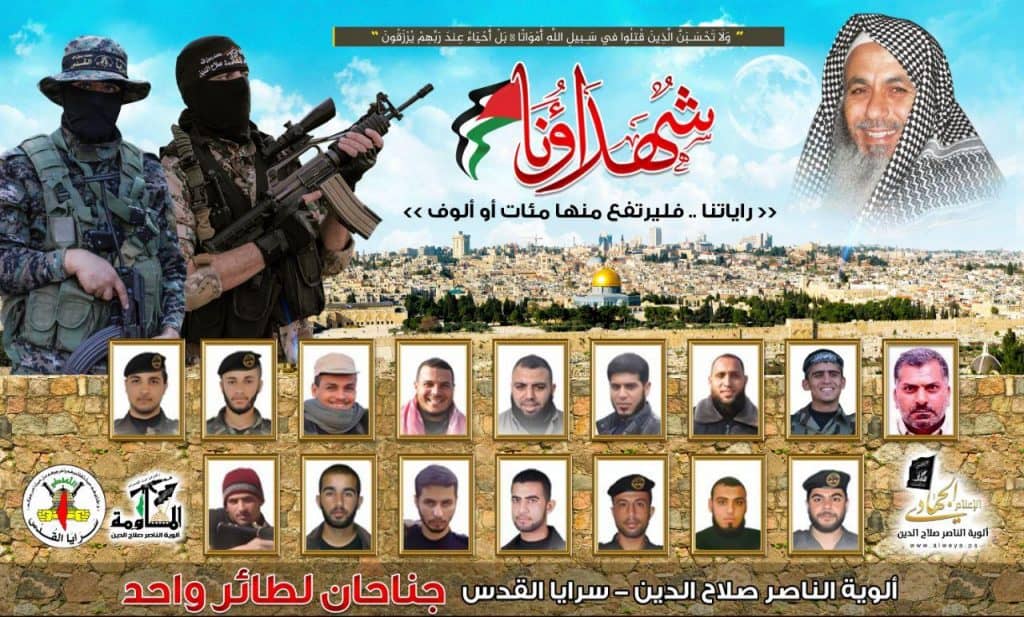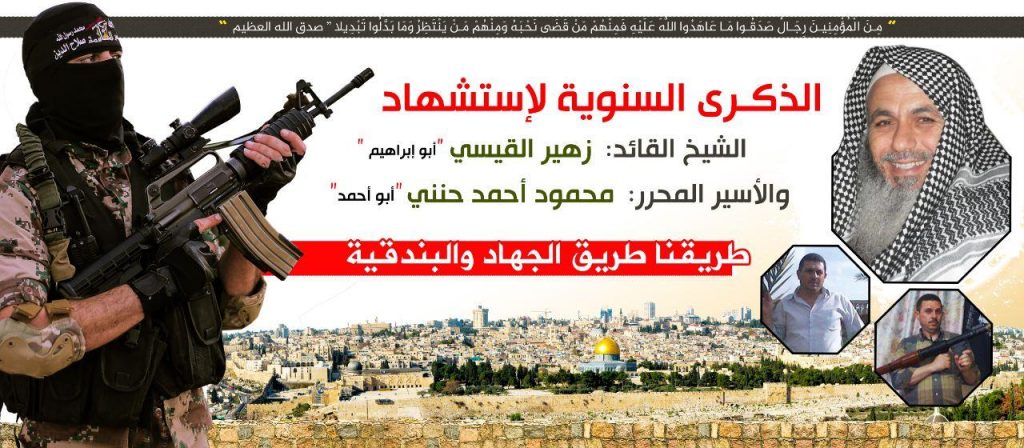On March 9, the Popular Resistance Committees (PRC) published a statement commemorating its former leader, Secretary General Zuhair al Qaisi, and one of its military commanders, Mohammed Ahmed al Hanani.
In its commemoration, the PRC lauded al Qaisi, who was “devoted to a resistance approach that formed a milestone in the Palestinian struggle.” It “was an approach that made armed resistance and direct and continuous engagement with the Zionist enemy a high priority for the Palestinian people in their struggle with the Zionist project.”
The death of al Qaisi and its aftermath
Back on March 9, 2012, al Qaisi was traveling with al Hanani in the Gaza City neighborhood of Tel al Hawa when their vehicle was struck by a missile fired by an Israel Defense Forces (IDF) aircraft. Both were killed by the airstrike and another passenger was seriously injured.
His death was viewed by militant factions of the Gaza Strip as a violation of the terms of a ceasefire agreement made during Operation Cast Lead.
A decision was made to retaliate. The resulting operation was primarily led by Saraya al Quds (Palestinian Islamic Jihad) and Nasser Salah al Din Brigades (Popular Resistance Committees).
According to Saraya al Quds, the group launched Grads, 107mm rockets and mortars at targets inside Israel.
The group claimed to have used for the first time a mobile rocket launcher that gave them the capability to launch multiple rockets in a single salvo. They also claimed to successfully attack targets 45 km inside of Israel with locally manufactured rockets – a feat that had not been previously achieved by the militant group.

The clash between militant groups and the IDF continued for several days until a ceasefire was reached via Egyptian mediation. In total, sixteen militants were killed, fourteen belonging to PIJ’s Saraya al Quds.
The decision to take out al Qaisi
According to the IDF, the decision to take out al Qaisi was made in response to several attacks that occurred in southern Israel on Aug. 11, 2011.
Militants from the Nasser Salah al Din Brigades allegedly crossed into Egypt from Gaza a month prior to train and prepare for an attack on Israeli citizens and IDF soldiers in southern Israel.
On the day of the attack, the militants allegedly crossed into southern Israel from Egypt and began a coordinated assault. A bus, an IDF Jeep, and construction workers building a security fence at the Egyptian border were targeted.
In the attacks, six Israeli civilians and two IDF soldiers were reportedly killed, including several Egyptian soldiers who were caught in a crossfire between IDF soldiers and the attackers.
The Popular Resistance Committees claimed they were aware of Israel’s intent to kill al Qaisi. The PRC’s spokesperson, Abu Mujahid, stated the group met with Egyptian intelligence officials a month prior to the assassination and were warned that al Qaisi’s life was in danger. Despite the warning, the group did not take enough precaution to avert the death of their leader.








